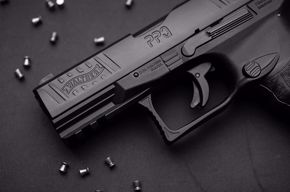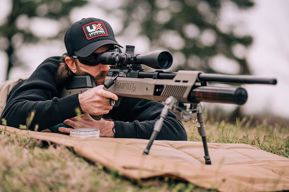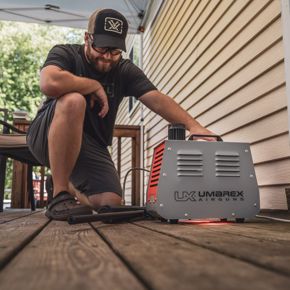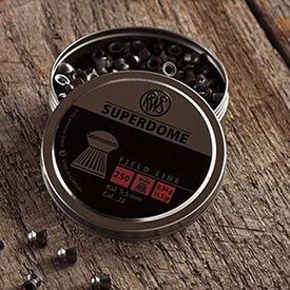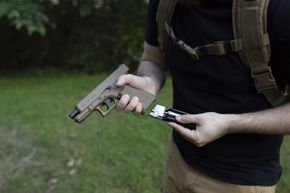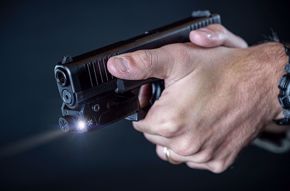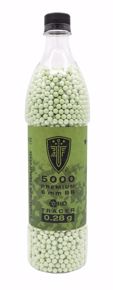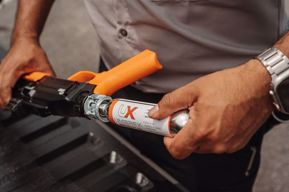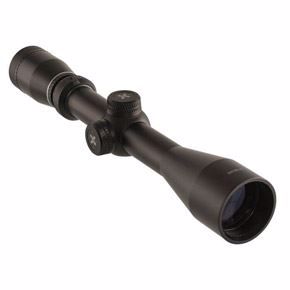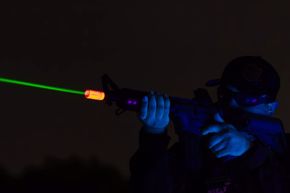Back in the dark ages (the 20th century) there wasn’t a lot to choose from when it came to pellet gun calibers. There was .177 and .22 that were commonly available and that was pretty much it. And in some places, .22 pellet ammo was sort of hard to come by. But that was a long time ago. These days, everything from .177 to huge airgun slugs are available for airgunners to choose from. The question is which one or which ones do you get?
Evaluate Your Needs
Do you even need a pellet rifle? Pictured here is a CO2 powered air archery gun, the Umarex AirJavelin.
With any purchase, you need to honestly evaluate your needs. Questions like the following are crucial for making a good choice:
-
What will this airgun be used for?
-
What distances will I be shooting?
-
How will I power this airgun?
-
What are my budget limits?
One method I have found very useful when determining the best fit for me when it comes to bigger purchases has been to make a spreadsheet that compares all of the products I am looking at along with specific criteria (like the answers to the questions above). For years I didn’t even bother to do this on a computer based spreadsheet. A simple sheet of paper and a writing utensil are all that is needed. But, to be honest, making a table on a word processor or using spreadsheet software is very easy and much neater than drawing it out by hand.
What Will Your Airgun Be Used For?
For small to medium sized game hunters, a .22, .25, or .30 caliber rifle from the Gauntlet Series might be what the doctor ordered.
There are quite a few answers to this question. There’s pest control around the house or farm, backyard target shooting, competition, small game hunting, medium game hunting, large game hunting, good old fashioned plinking, and dozens of other reasons. Only you know the answer to this question. For some of these uses, there’s no need to get the biggest airgun out there. However, if you are going after deer, you will need to choose a rifle that meets your state’s caliber and power restrictions.
What Distances will You be Shooting?
Ckye Thomas (L) and Abby Casey (R ) shooting field target competition with .177 caliber Walther LG air rifles.
When it comes to range, it is logical that a smaller caliber like .177 will not work well at long range shooting. The small, light projectile just cannot stand up to the wind when it comes to longer range shooting. This might also apply to .22 caliber air rifles as well. But if your shooting will be taking place in the confines of your range or yard, there might not be any need to size up to a larger caliber.
How Will You Power Your Airgun?
Spring or Gas Piston air rifles only require pellets and a little bit of elbow grease in order to shoot. For many shooters, this is still the best answer.
Back in the previous century, there were effectively two options for powering an air rifle- pump pneumatic or spring. These days, you can commonly find CO2, pump pneumatic, spring, gas piston, pre-charged pneumatic, and nitrogen powered pellet rifles. CO2 and nitrogen powered rifles do come with a recurring cost associated with the CO2 or NitroAir cartridges. Pump pneumatic, spring, and gas-piston rifles just require some elbow grease (brute strength) in order to power. Pre-charged pneumatic rifles require a source for highly compressed air. This can come in the form of a special high pressure hand pump or an electric high pressure compressor. While the pump pneumatic and springer style rifles are essentially “free” to shoot, the opposite end of the spectrum is found in the PCP category. High pressure air does not come cheap. If you are going after larger game species, your hands are tied– you will need a source of high pressure air. However, if you are doing some light pest control, small game hunting, or plinking, any of the other versions are excellent fits.
What Are My Budget Limits?
Purchasing a big bore PCP like the Umarex Hammer along with a high pressure fill system might require some careful budgeting. Plan accordingly.
Dr. John might have thought that “Woman is the Root of All Evil”, but at the end of the day it’s your budget that determines your purchases, evil or not. Patience as much as money is important if you are considering a purchase that is outside of your short term discretionary spending limits. We’ve all wanted for gear that is outside of our short term ability to purchase. Whether life has gifted you peanuts or a peanut farm, planning for a bigger purchase is not only wise, but best for the sanity of all involved. If you are going for a more expensive PCP and compressor set-up, discipline yourself to save and fully research your purchase. Doing this instead of rushing out to buy immediately goes a long way toward eliminating any buyer’s remorse.
Mark Davis, avid outdoorsman, family man, and outdoors writer is the eCommerce Marketing Manager for Umarex USA.

